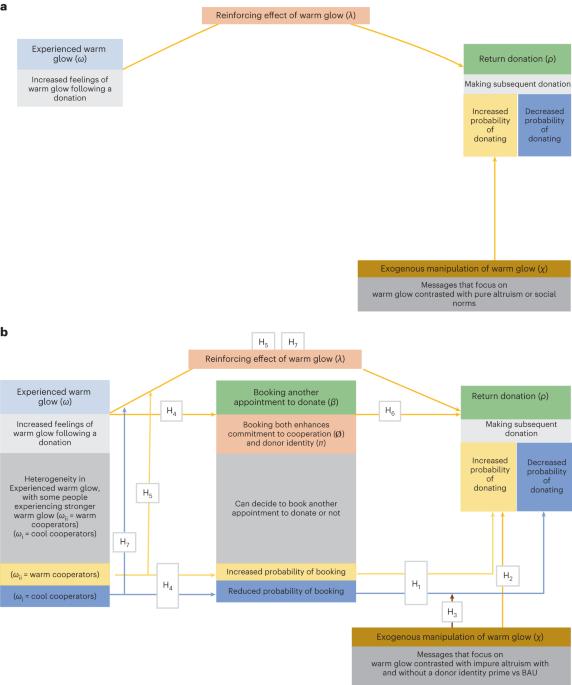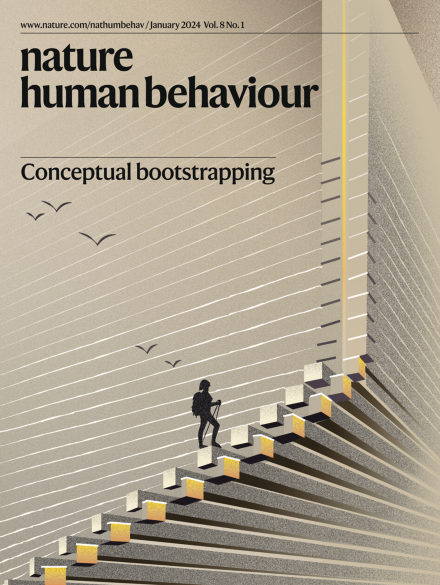热身酷的合作者。
IF 21.4
1区 心理学
Q1 MULTIDISCIPLINARY SCIENCES
引用次数: 0
摘要
很难解释为什么有人会对不互相回报的陌生人重复高成本的合作。暖光提供了一个解释。我们认为,暖光作为一种维持长期合作的机制,随着时间的推移会逐渐冷却,但可以通过简单的干预信息进行预热。我们在6项研究中测试了我们在重复自愿献血(非互惠陌生人的高成本帮助)背景下的预测:一项基于现场的实验(n = 5,821),比较了温暖的光辉和纯粹的利他主义信息;一项实施研究,比较了澳大利亚所有首次捐助者的3年实施前期(N = 270,353)和2年实施后期(N = 170, 317);4项研究(n = 716, 1,124, 932, 1,592)探讨了机制。我们表明有相对温暖的和冷的合作者,而不是冷的合作者。酷酷的合作者之间的合作通过温暖的发光加上身份信息得到加强。此外,通过预约来促进未来合作的行为,与成为热情的合作者有关。讨论了社会影响。本文章由计算机程序翻译,如有差异,请以英文原文为准。

Warming up cool cooperators
Explaining why someone repeats high-cost cooperation towards non-reciprocating strangers is difficult. Warm glow offers an explanation. We argue that warm glow, as a mechanism to sustain long-term cooperation, cools off over time but can be warmed up with a simple intervention message. We tested our predictions in the context of repeat voluntary blood donation (high-cost helping of a non-reciprocating stranger) across 6 studies: a field-based experiment (n = 5,821) comparing warm-glow and impure-altruism messages; an implementation study comparing a 3-yr pre-implementation period among all first-time donors in Australia (N = 270,353) with a 2-yr post-implementation period (N = 170, 317); and 4 studies (n = 716, 1,124, 932, 1,592) exploring mechanisms. We show that there are relatively warm and cool cooperators, not cooling cooperators. Cooperation among cool cooperators is enhanced by a warm-glow-plus-identity message. Furthermore, the behavioural facilitation of future cooperation, by booking an appointment, is associated with being a warm cooperator. Societal implications are discussed. Ferguson et al. test the effectiveness of messages designed to increase rates of repeat blood donation and find that warm-glow feelings as a motivation for cooperation cool over time but can be reactivated.
求助全文
通过发布文献求助,成功后即可免费获取论文全文。
去求助
来源期刊

Nature Human Behaviour
Psychology-Social Psychology
CiteScore
36.80
自引率
1.00%
发文量
227
期刊介绍:
Nature Human Behaviour is a journal that focuses on publishing research of outstanding significance into any aspect of human behavior.The research can cover various areas such as psychological, biological, and social bases of human behavior.It also includes the study of origins, development, and disorders related to human behavior.The primary aim of the journal is to increase the visibility of research in the field and enhance its societal reach and impact.
 求助内容:
求助内容: 应助结果提醒方式:
应助结果提醒方式:


